
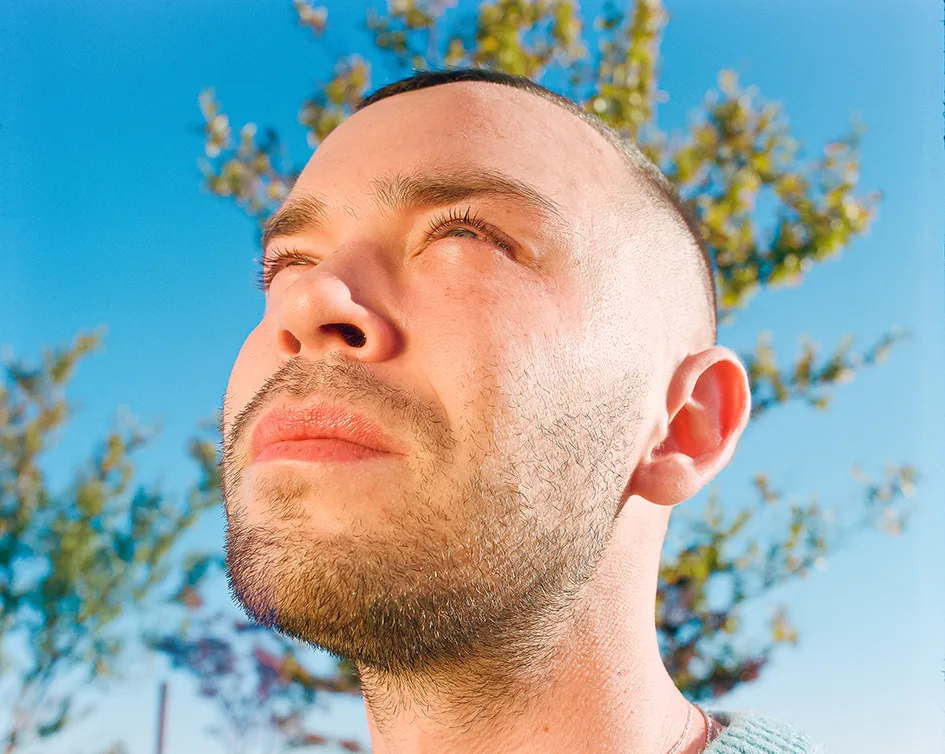
Sometimes it takes a global pandemic for you to really realise who you love. Who you miss. Which people are more important to you than you once thought. We have time now to reflect on who made an impact on our lives. Who was it who showed you something that changed the way you look at the world forever? Who did you spend that blisteringly hot summer with by the lake? Who, when you hear the phone ringing, do you hope’s on the other end?
We fill our lives with people, haphazardly casting them as crucial supporting roles in the story of our lives. In a time where we are all longing for the people dear to us, we asked some of our favorite photographers we know to look back through their archives and pick out a photo taken on a particularly good day in their own personal history to share with us. With it, they’ve written about what ingredients came together to make that day particularly magical, and why they think the photo managed to capture its very essence to immortalize it forever.
Alec Soth
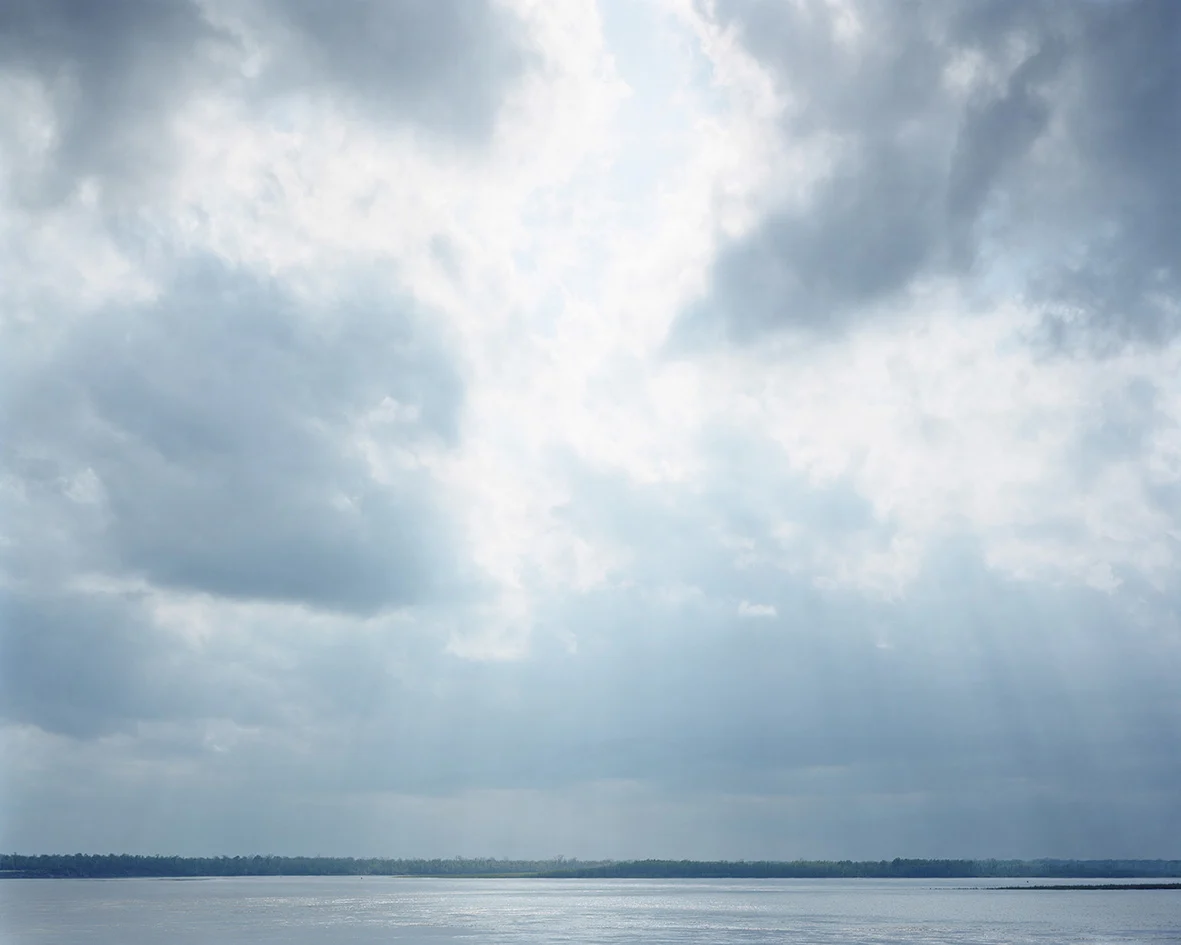
I felt as free as Huckleberry Finn.
In 2002, after years of saving money and arranging for time off of work, I was supposed to go on my first long-term photographic expedition. Soon before I left, my mother-in-law Linda became terminally ill. For weeks I sat by her bedside instead of wandering along the Mississippi. After Linda finally let go, my wife insisted that I hit the road. I’ll never forget the feeling of exhilaration when I first reached the river. I realized that I could go north or south and follow whichever side of the Mississippi I wished. I’ve never felt so free! Hungry for spring warmth, I headed south. I was in a minivan, not a raft, but I felt as free as Huckleberry Finn.
Like so many others, I was drawn to Mark Twain’s masterpiece for the way it evokes boyish wanderlust. But the genius of this book is the way it describes a very different desire for freedom. As young Huck wanders south he encounters Jim, a runaway slave headed north. Knowing that my trip couldn’t just describe my own privileged autonomy, I sought out its opposite. I dropped a letter in the mail to Angola State Penitentiary in Louisiana requesting access. The largest maximum security facility in the country, Angola is also one of its most famous. One of its nicknames is “Alcatraz of the South,” because it is surrounded by the Mississippi River on three sides. It is also nicknamed “The Farm” because of its historical function as a slave plantation.
I think about that day and how at that point in my life, I felt a sense of clarity amidst a lot of uncertainty.
By the time I arrived downriver, I received notice from the penitentiary that I could attend their Easter Sunday service. It was a remarkable event with thousands of men filling bleachers. But even more memorable was the tour of the farm I was given. A young guard took me out in a truck, and I saw workers planting the fields like an old-fashioned chain gang. They were patrolled by guards on horseback. Next I was taken to the banks of the Mississippi. In many places on my travels, “the Big Muddy ” isn’t much to look at. But here, on a glorious Easter Sunday in the middle of nowhere, the river was majestic. As I took it in, I’ve never felt so grateful for my health, my freedom, and for the life ahead of me.
I took a picture of the scene but didn’t use it in the final published book. I chose one with the farm workers instead. But this picture is the one I return to in order to remind myself of the glory and privilege of freedom.
Hanna Moon
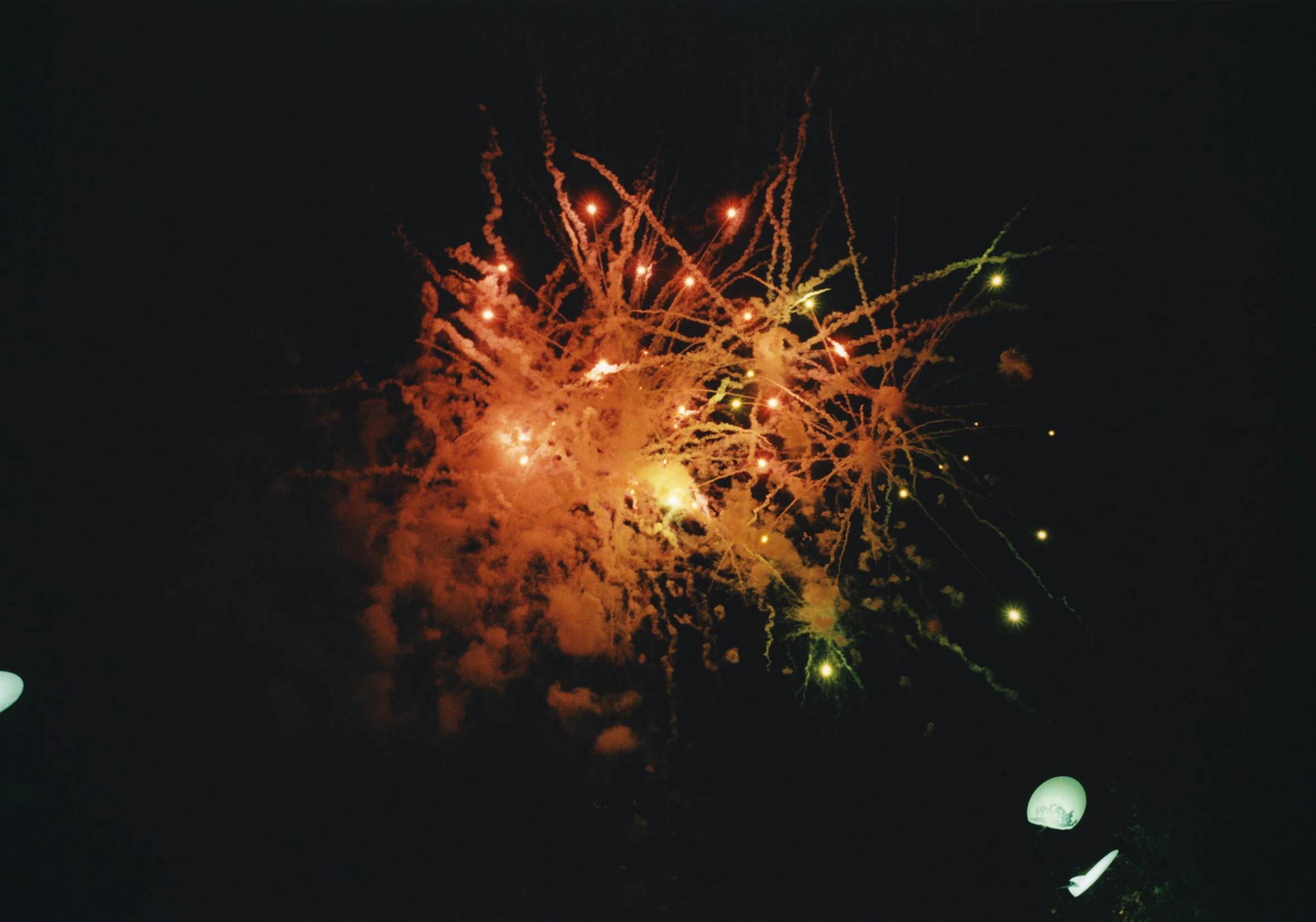
This is a snapshot of the kind of night sky you might expect to see on a mid-August evening in San Sebastián, Spain. I visited the city in 2017 while on a tour of northern Spain with my sister and my mother, who had travelled from Korea to join us for a European summer holiday. San Sebastián, on the coast of the Bay of Biscay, was our final stop of the trip. The city is home to its very own annual International Firework Competition, which was my introduction to competitive fireworking. I was not disappointed.
By day, I remember San Sebastián as an oasis of sunshine and sea to round off an otherwise overcast holiday. We spent our days exploring the town, enjoying good food and swimming in the sea. My mother, who had broken her toe at some point earlier on the trip, would sit and watch us from the beach like a UV-protected lifeguard: armored from head-to-toe with long sleeves, a shawl and no less than three parasols (as is the Korean way). She was easily recognisable among the hoards of people sunbathing on the beach.
In contrast, our nights were spent cowering in awe under an excessive cacophony of fireworks in the sky. For me, this image conjures up the brutal sounds and smells of gunpowder and smoke, against picturesque reflections of war-like explosions on the water. This particular firework show was the most dramatic display of the week-long event. It may sound naive, but I didn’t know fireworks could sound that loud, even from a considerable distance. At times I felt like an anxious house pet: stunned by each deafening boom. Being a mere spectator on the streets of San Sebastián, caught beneath the battleground for each firework artist attempting to out-do the last, was both terrifying and amusing at the same time. Here I attempt to organise the chaotic affront to the senses into a single aesthetic, which personally unleashes these warm memories of my summer of 2017.
Maisie Cousins
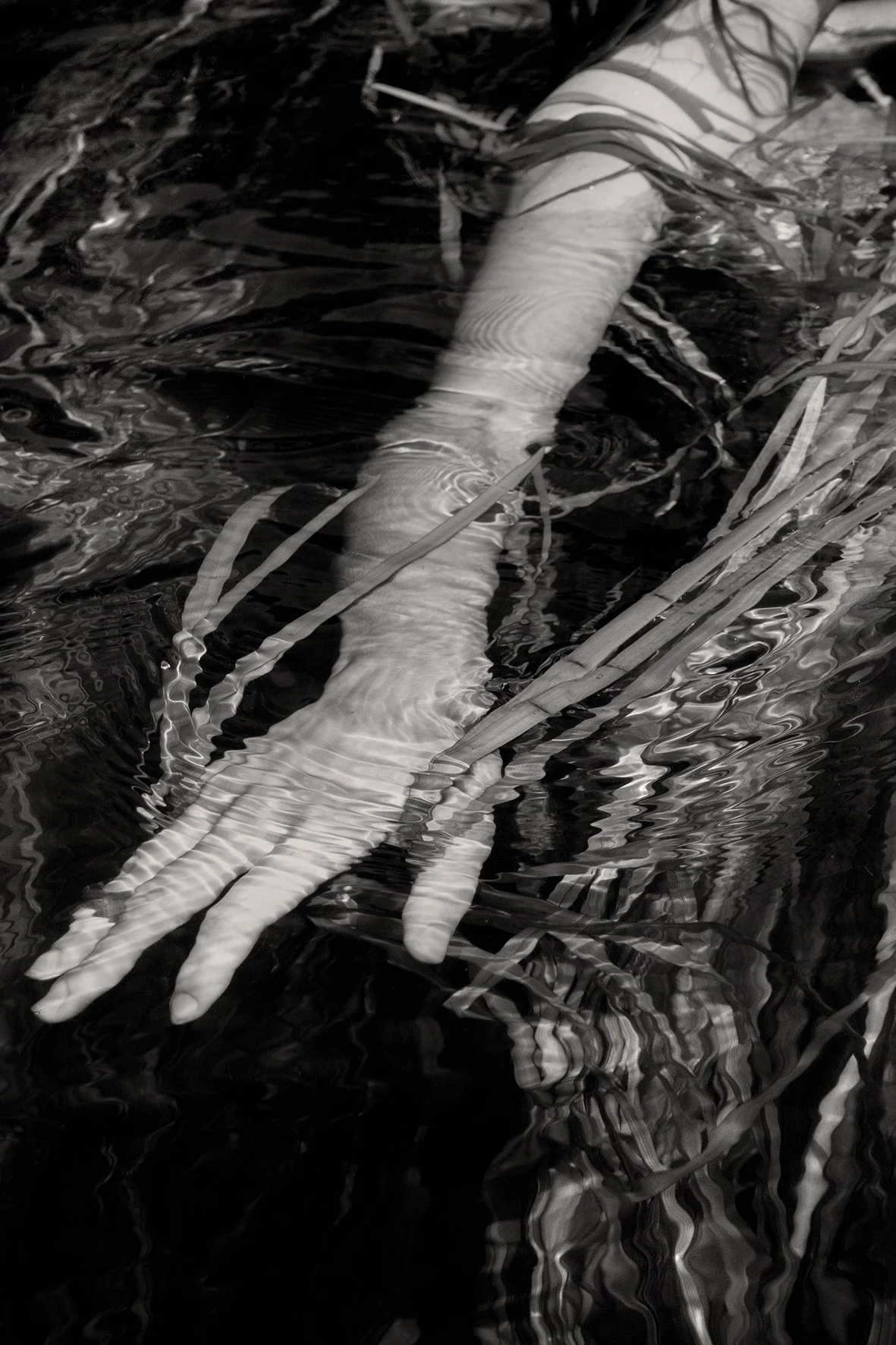
All my best memories with friends seem to be in water. Maybe it’s the sensation of it that sticks in your mind: of the hot sun and water on your skin. This photo was taken when I was river swimming in the reeds with my friend Billie two summers ago.
Prarthna Singh
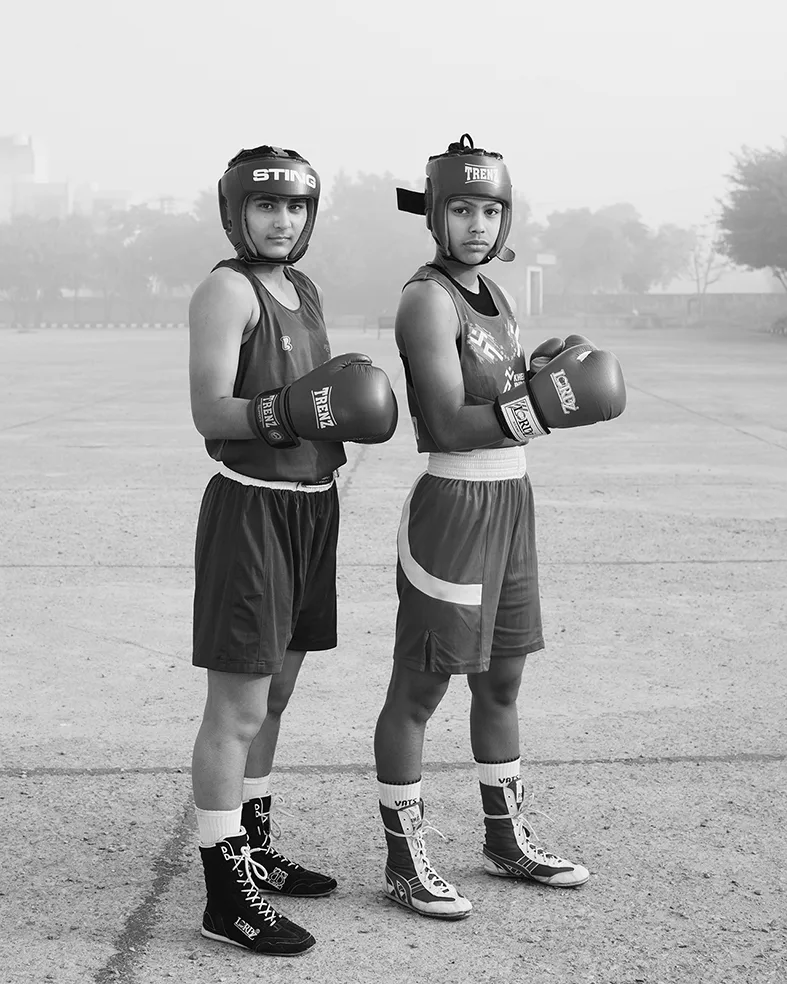
It was a crisp morning in March last year, when I found myself in the middle of the Sports Authority Of India Training Camp in Rohtak, Haryana, India. For the past eight to 11 months, the camp was “home” for a group of girls from across India, ages 10 and up, here to train as professional boxing athletes.
After a few days of making portraits with the girls indoors, at the stadium where they trained daily, I asked the group I was photographing that morning if we could step out into the courtyard. It was 6am and the fog was gradually lifting. We could hear the drills from their coach in the distance as the daily training sessions kicked off. Also wafting in were the smells and sounds of breakfast being prepared in the kitchen next to the dining hall. The misty outdoors created a dramatic sense of our presence in the world, with the sounds and smells completing the sensory experience of the moment. As a photographer, the moment of actualizing an image I have envisioned for years is one of pure elation. This was one of those rare moments.
The image belongs to my ongoing series Champion that I have been developing for the last six years. The project seeks to make a series of sculptural, constructed images of female athletes. It marks an important cornerstone in my journey as a visual artist exploring feminine strength through portraiture.
I reflect on these moments, as I gather energy and inspiration to carry forward my practice.
A primary motivation for these women is their desire to excel for their country. The social and cultural norms imposed on them by society are challenging; a comment from a relative on being more “feminine,” or a derogatory remark on the street. For most, the elders of their families can never be told of their accomplishments in fear of banishment. Yet they remain undeterred. “What is the one thing you want most in the world?” I would ask them; "Desh ke liye Medal jitna hai" (I have to win a medal for my country) would be the answer.
Some of my happiest moments were when I was surrounded by these young hopefuls, watching them train with grit and determination. I reflect on these moments, as I gather energy and inspiration to carry forward my practice. Living and working in India, this fierce feminine spirit is often silenced. Many times the stories I cover and the news that I am confronted with, leave me with a deep sense of hopelessness.
But at camp, it’s a different story. I get to know girls from the north-central Indian states of Haryana and Uttar Pradesh – states with some of highest rates of female infanticide in the world – who change their destinies. They defy all norms of femininity and the idea of what a girl should look like in order to be considered desirable to a man. This brings me happiness and leaves me optimistic for what lies in our future.
Alexander Coggin

This is my sister, Gab, and our niece, Ellis. What was supposed to be a lovely tube ride, pulled from the back of a motorboat, turned into a full meltdown. The kid probably just needed lunch. Maybe a nap. Too much sun or something. Who knows? Kids’ moods are mysterious, frenetic.
I’ve not lived in the same country as my family since 2010, so going back to America every summer to catch up and make photographs has been an invaluable part of my process. Because of COVID-19, I won’t be able to travel to the US and shoot any family this year, which is devastating. Seeing a child at age five and then at age seven is like skipping a chapter in a book.
In years past, producing summertime images was helpful, medicinal even, in digesting that growing gap between me and my hetero-counterparts’ changing lives: what was still true, anyway? What could I relate to? This is what I see. As a queer it was borderline anthropologic, my watching. Seeing my siblings and siblings-in-law build lives and build families.
So here I am, all summer, tethered to a different continent for my own good, all form and no content. How can this work shift, how can it pause? I’ve been shooting birds for a month, but they don’t take direction well at all.
Isabel Okoro

This is a photo from Necessary Interactions, a personal project by my good friend and stylist Daniel Obaweya and I. When I met Daniel at the end of 2018, I was just starting to realize how much I loved photography and storytelling. I was starting to think a lot about the possibility of using my work to create worlds where my friends and I could simply exist. When Solange released When I Get Home I was feeling very inspired to make things with intention as opposed to instant gratification. He and I spoke a lot and eventually decided to start a collection of independent mini-series that each aim to depict relationships that exist within the black youth experience.
In the mini-series Sister Sister Sister, the idea was to depict playfulness and togetherness amongst strangers turned sisters. I was thinking a lot about how everyone we know and are close to was once a stranger. I don’t have a sister that my mother gave birth to, but I have sisters who I chose. I love my family, but I was also thinking about how in this world I wanted to create for my friends and I, we would have more freedom over our existence. Daniel and I cast three girls who hadn’t met each other before and I photographed them getting to know each other in a mix of posed and caught-off-guard shots.
This photo is called Tinko-Tinko. The title is the Nigerian name of the hand game the girls are playing and I used to play with my friends when I was growing up. During the shoot, we were walking around the neighborhood when I saw a lone tree and instantly thought of Daughters of the Dust by Julie Dash. I asked the girls to talk to each other about youthfulness and then try to replicate that, this photo was the result.
I want to create my own world where black people and women are represented the way they see themselves
The mini-series was shot about a week before my 18th birthday last summer. I remember getting the scans back at the same time I got the ones from my birthday and feeling really happy. I was happy to see my friends and I enjoying each other’s presence and also to see work that looked exactly like what I wanted to create.
I come from Nigeria and sometimes, when I am looking at popular imagery from Africa, I see us wrongly represented through the western gaze and fetishizations. I decided that, through my work, I would create my own world where black people and women are represented the way they see themselves, and I'd hope that these photos will stand the test of time. After seeing this photo of the three girls, it made me think more about this world and how I could use it as a way of immortalizing the people I love or meet.
I love the sun a lot. It inspires me. When I'm home in Lagos, I usually shoot at the beach or anywhere else where the sun is visible. So when I thought more about this world, I decided to call it Eternity because the sun is forever and everything it shines on is ours to explore.
Campbell Addy

When asked to select an image from my archives that reminisces on a “happier” moment in time, I am instantly taken back to my time in Ghana, the motherland.
Of the images I’ve taken in my career thus far, the photographs captured during my time(s) in Ghana remind me why I started photography: to document and give power to our people.
This image was taken whilst on assignment for i-D magazine where I was shooting a story called The Future Sounds of Africa with Fuse ODG and his team. Just as that assignment was the future of sounds, this image resembles the future of the modern world: the children. Looking back on this image I am transported back there, I can feel the summer heat reactivating my melanated skin, I can hear the laughter and whispers of the children as they line up to perform their morning song for us visitors. I once again feel the immense pride I have knowing we are of the same people.
People say that children reflect the innocence we adults once had. I believe that to be true.
People say that children reflect the innocence we adults once had. I believe that to be true. When taking their photograph, they gleefully obliged and were as fascinated in me and my work as I was in them. They were told they were very lucky and should be grateful that we had come to visit. But on the contrary, I was the lucky one. I was met with such open arms and purity that it humbled me beyond my wildest dreams.
Photographing them, listening to them and engaging with them, made me realise these children are the future. They are my kin and we should protect them at all costs. Although this image does bring great joy to me, I sincerely want the readers of this piece to take something away from it. These innocent, honest and beautiful children may become victims to trials placed on them via the Western world in order to find a vaccine for COVID-19. Unassuming and relatively untouched by the virus, Africa and its people should not be the testing ground for the COVID-19 vaccine. The children of the future shouldn’t be affected and further disadvantaged because of others' mistakes.
This picture brings me great joy and I want it to stay that way. I am doing the best I can to light up the littlest corner of the world I control via my words and photography, I hope those reading this can do the same.
Yumna Al-Arashi
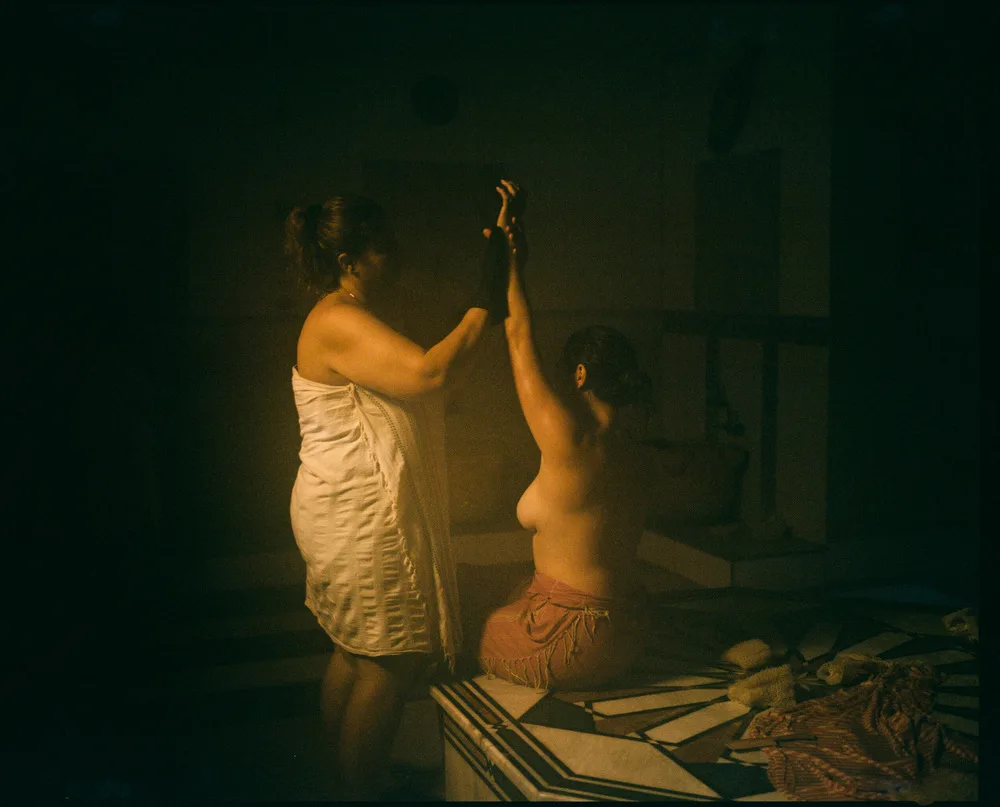
This photograph is an outtake from Shedding Skin, a body of work made in the spring of 2017. As the work approaches its third year living in this world, I find myself reflecting on what it meant for me to make, as well as what has happened in these last three years.
This project came to me during a time of tremendous change and fear. I had just wrapped up a project in North Africa documenting the last generation of women with facial tattoos in the region; a project which opened a portal in which I felt an unmistakable spiritual connection to my ancestors for the first time. On my long journey through the snowy Atlas mountains and deep into the Sahara, I found a network of brilliant women who entrusted me with their stories, sharing a deeply sacred practice so entwined with feminine power – which history had almost left behind – reassuring me of my own intuitions.
Back home, Trump was on his way to leading the country I had called home. I found myself torn between the news of what was happening at home and trying to stay present on the road for my project. I was remembering what had brought me to document these women’s stories, remembering how important it was to inject our perspectives against a colonial-dominated history. A few days into his presidency, Trump installed his Muslim ban and my heart sank with the knowledge that mine and my family’s freedom could no longer exist the way it had before. I felt broken, and yet, I was surrounded by women who comforted me and showed never ending solidarity.
I wanted to bathe in the solidarity of these moments, and make sure they were always ours.
On my last day in North Africa, my fixer and I, both extremely exhausted and inspired by the work we’d completed in Tunisia, went to a hammam to relax and clean the month on the road off of us. I’d been going to hammams my whole life, feeling this space as one of comfort and one that always felt like home. My heart was heavy, and yet, I felt it was supported, even in a room of strangers. I laid on my stomach as a woman old enough to be my mother was scrubbing dirt off of my body. Tears began welling up in my eyes as all of the emotion from my trip had come to a head. I felt like a baby being taken care of by a total stranger. I was crying and laughing and crying again. Thoughts ran wild through my head: how could this be happening? How have we taken our xenophobia so far? I wanted, more than anything, to take back these images of us. I wanted to bathe in the solidarity of these moments, and make sure they were always ours.
This was where Shedding Skin was born. I’d taken my idea and began the production to create a body of work which somehow encapsulated all of these emotions. I decided to create it in Beirut, a city I’d lived in a few months prior. My entire team was made up of women and I was overwhelmed by the response of women who were eager to be a part of the project from beginning to end. I’m not entirely sure if I can put into words what it felt like to create the images and film. It was overwhelming joy, gratitude and beauty.
The exhibitions following the creation of work were a continuation of those feelings and still to this day this work draws so many women like me closer to one another. In a time when solidarity and care are so important and when everything feels like it could be going wrong, when our need to come together (even at a distance) in so many different ways stays strong, I remember this body of work.
Stephen Tayo

In late September 2019 I received a text informing me that I had been commissioned to
document the world-famous Sapeurs of Congo Brazzaville. My home city Lagos is in the middle of a cultural renaissance that has its people, culture and lifestyle exported across the world through festivals, dress, music and film. I have been a beneficiary of that renaissance, and have been part of crafting that uniquely Lagosian image that the world has come to recognize through my photography and collaborations with high-profile Nigerian musicians. The Sapeurs of Congo Brazzaville have managed something similar for their country; showing an alternative side to the country and its love for fashion and individuality. I have to admit, the prospect of photographing Sapeurs in their authentic element excited me.
Before I started getting commissions to photograph subcultures across Africa, I had photographed children. At the age before peer pressure starts to mold their identities, children define their identity by how they dress. They gravitate towards bright colours, prints and patterns: unconventional mash-ups that can be confusing to adults, but perfectly express their individual ideas of how clothes could be a short-hand for self-expression. As my work became more professional, I had fewer opportunities to document those kinds of stories.
I am especially honoured that I get to document stories on the continent that are different from the expected stereotypes.
Visiting Congo Brazzaville was my second time in Central Africa, after my visiting São Tomé Príncipe in July 2019. Photographing the Sapeurs of Brazzaville and in particular Grace Mezzani was a highlight of my career. It was a glimpse into what it must be like to hold on to that defiant sense of identity children are known for well into adulthood, to marry uniformity with individuality and celebrate both. Grace Messani was a delight to shoot because she was a woman in a male-dominated subculture, challenging stereotypes and carving a space for women to embrace and participate in Congo Brazzaville’s most contemporary fashion export.
“The inclusion of Sapeur culture is very new, which says a lot about patriarchy.” Messani told me of her mission to preach and represent inclusivity in Sapeur culture. “Women have been disregarded for so long because Congo is very conservative in terms of its culture.”’ Helping bring visibility to her love of clothes, in a way that is divergent of what is normally expected of women, and her bravery and leadership (Messani is also a politician), is something I would have gladly done for free. But I am especially honoured that I get to document stories like hers: stories on the continent that are different from the expected stereotypes.
Quil Lemons

As an artist, I strive to capture raw human emotion with my lens. I have chosen this image because I wanted to show something real. This image is of my boyfriend, Matt. This portrait of him is also in defiance of the unspoken rules of posting your most perfect self on social media. Those who participate in social media (myself included) create/curate and put out versions of our lives that only show the highlights, removing emotion and truth. I’m thankful Matt allowed me to capture him in one of his most vulnerable moments. I love how raw this image feels. Though this is an image of him crying, this was a pretty joyous occasion. Matt was taking a self-portrait, the final picture for his debut photo series Tears Like Mine, a project focusing on male vulnerability and crying.
He was using his Super 8mm camera to capture his likeness. Right after he finished and the camera stopped rolling, I quickly asked could I take his photograph as well, while his tears were still freshly resting in his eyes. Overall, the experience of taking pictures of someone I am intimate with allowed me to have a closeness with my subject like never before. As I look at this image, it almost feels invasive; or as if we aren't supposed to see this moment. I'm thankful Matt has let me share this with all of you. I cannot wait to continue to make images that are disruptive in this way.
Melissa Alcena
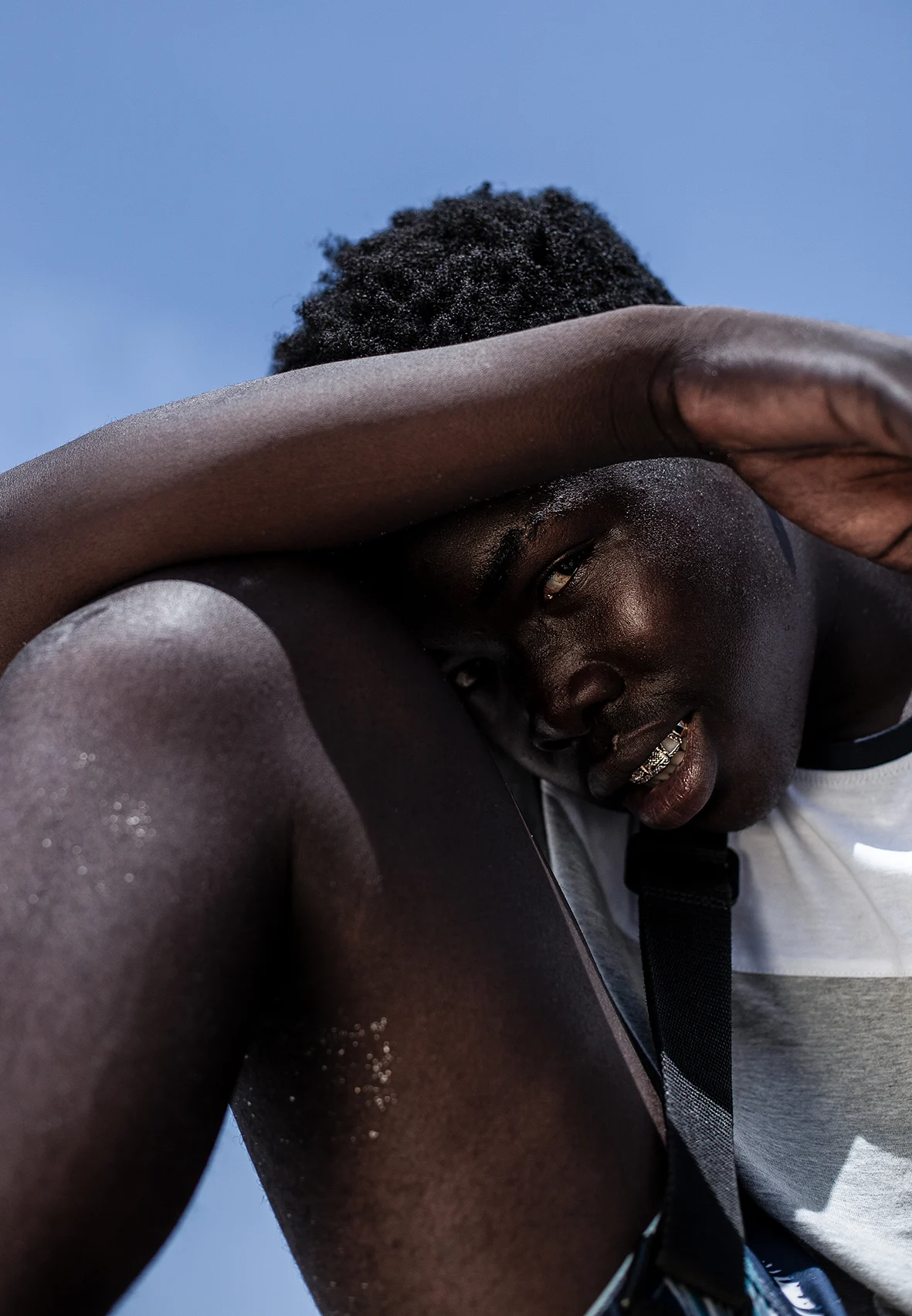
I learned a lot in 2017. About myself, culture, the politics of looking...those lessons are only deepening now. It was also the year I took this photograph of Anderson, in a chance encounter that produced one of my favorite images and memories. I saw him as I was waiting on the beach for a friend, on a perfectly clear day. I was people-watching and fixed my gaze on this teenager who was walking down the beach. He had a deep limp and was offering bracelets to tourists for sale. As he got closer to me, he held up the bracelets and made an offering gesture so I called him over.
I started up a conversation with him and he said he was selling the bracelets on behalf of his mother who had made them. He sat down next to me and I introduced myself. We talked about his plans for when he was done with high school and he told me that he was going into surgery the next day to help correct his legs, because one was longer than the other, but that he was excited about it. He was quiet and hopeful. I found myself talking as usual, going off on tangents hoping to impart some wisdom and he just listened so attentively. He was respectful, curious and I found his presence calming.
It had been a transformative year for me as a photographer. Although I had moved to Canada to study photography, this was the time in my life where I truly became excited about it. I had moved back home to The Bahamas a year prior, and taking portraits had become my means of coping with and renegotiating my new reality. Truthfully, I didn’t want to be home. I had never felt inspired by home, and it was probably because I always felt like an outsider to my own culture. I was tired of being perceived as not Bahamian enough, and moving abroad offered relief. To return felt the opposite.
I inserted myself back into the landscape I had been uncomfortable with, and I was rewarded in ways I couldn’t have expected.
I inserted myself back into the landscape I had been so uncomfortable with previously, and I was rewarded in ways I couldn’t have expected. In going out to meet, convene with, and photograph people, the conversations I had with the strangers I wanted to photograph gave me a purpose. For the first time in a long time, I felt I was being seen and I was being accepted. People offered me advice and words of encouragement when I opened up, and I offered an ear for their stories and gave them a photo. It was, more often than not, such a beautiful set of exchanges and I began to understand my people more and with a fresh perspective. Everything felt new again, and with each person I met and photographed I felt uplifted.
My connection with Anderson marked the pivotal moment I was at in my life. I asked him if I could seal the conversation with a portrait. He agreed and gazed down at me as I bounced the mini reflector I had my bag, at his face. I don’t know what it is about this photo, but every time I see it, I think about that day and how at that point in my life, I felt a sense of clarity amidst a lot of uncertainty. I was content, and I was growing in ways that made me feel optimistic about my future. It’s an indelible moment in my mind that can revive my sense of hope and what I value in my work and life.

